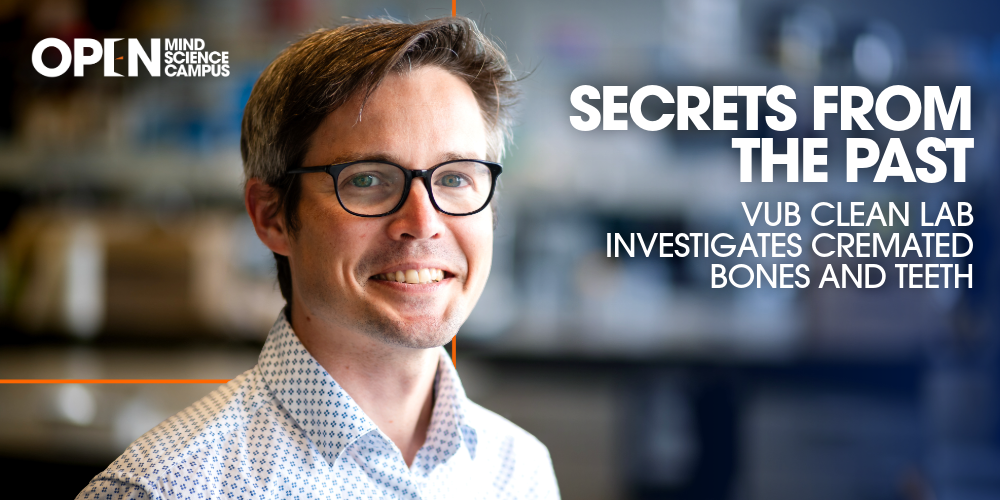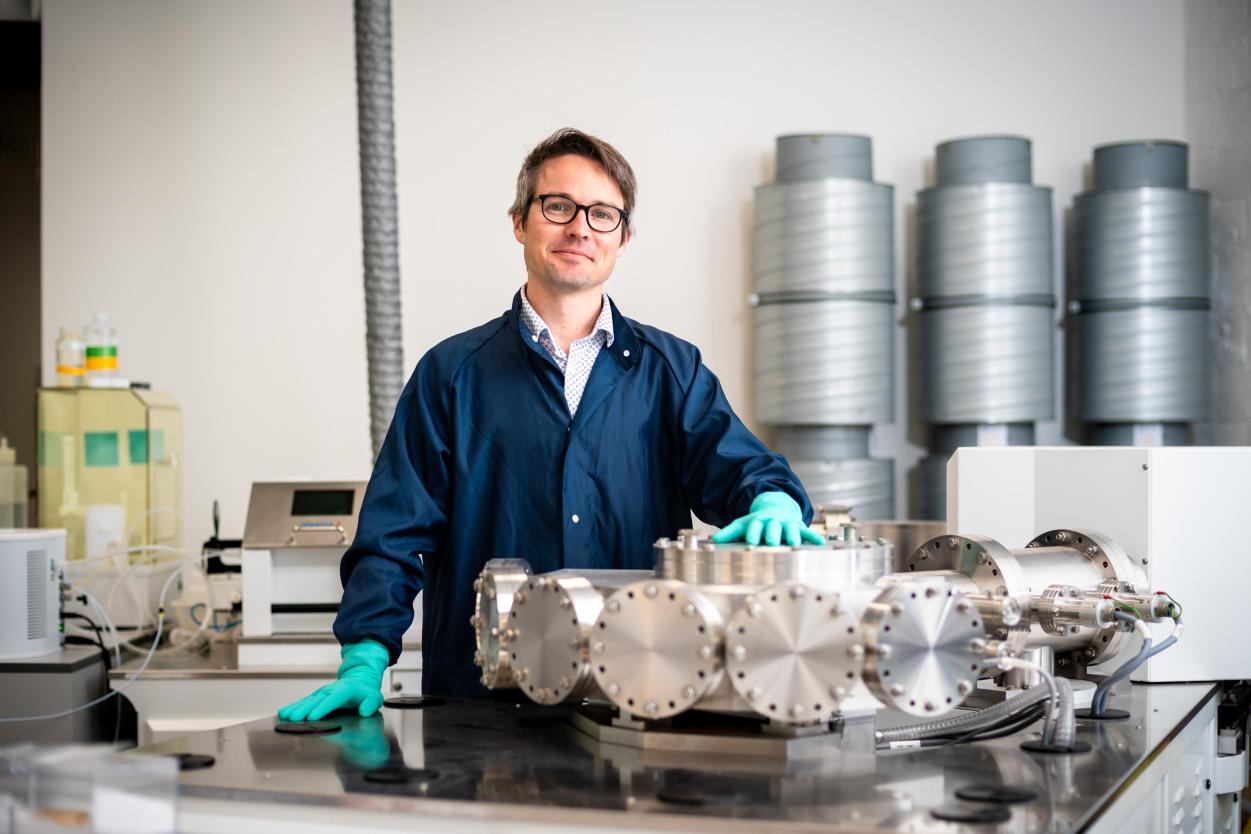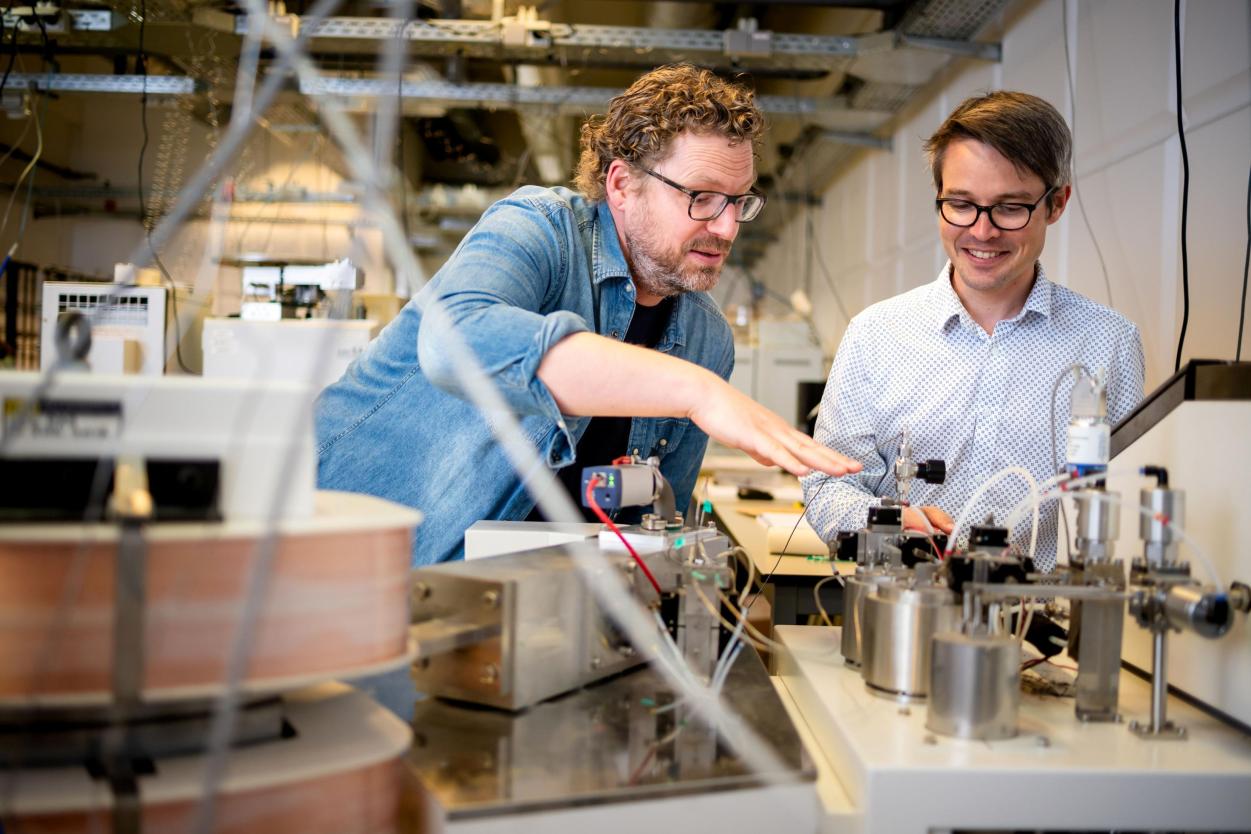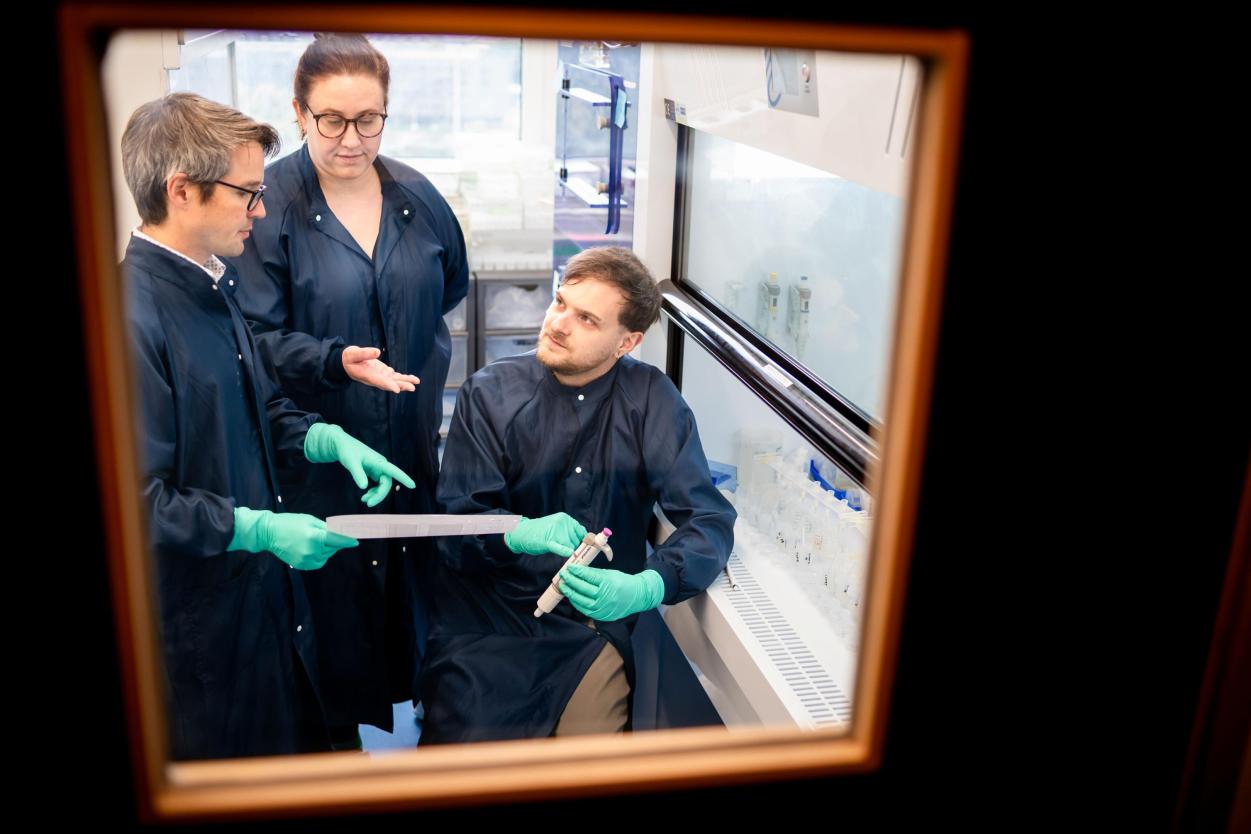
What did people eat in the Bronze Age? And in the early Middle Ages? Were they homebound or constantly on the move? Isotope analyses of teeth and bones tell part of that story. VUB Professor Christophe Snoeck has developed a method that even allows cremated – and therefore heavily damaged – skeletal and dental remains to reveal their secrets.
The AMGC research group (Archaeology, Environmental Changes & Geo-Chemistry) is renowned for studying the evolution of our solar system and climate systems. But it is also a leading name in archaeology. Scientists share the same laboratories, clean labs, and equipment for their research. Professor Christophe Snoeck, chemical engineer and archaeologist, focuses on burned human – and sometimes animal – remains.
“In cremated bones and teeth, only strontium survives”

Christophe Snoeck
Christophe Snoeck: “We are what we eat. Food enters the body and helps form our bones and teeth. By analysing the chemical composition of skeletal remains, we can find out what people ate thousands of years ago. Since every location leaves a unique chemical fingerprint in diets, we can also tell where they came from. Take a Bronze Age cemetery. Most people would have sourced food within a few kilometres of their village. If we find remains with a different chemical composition, we know that person had eaten differently for a long time and must have come from elsewhere. We combine these chemical analyses with archaeological context and – when available – written sources. That way, we can map social and cultural traditions, burial rites, and migration patterns.”
Skeletons usually do not preserve well in Belgian soil. On top of that, many people were cremated rather than buried. The Late Bronze Age (1300–800 BCE) and Early Iron Age (800–500 BCE) are known as the Urnfield period for good reason. Cremation makes research far more difficult. Bones and teeth burned at up to 1000°C are chemically transformed.
Christophe Snoeck: “During cremation, most elements are destroyed. But the signal of strontium remains. Strontium is an alkaline metal, like calcium. It enters the body through food and replaces part of the calcium in our bones and teeth. For my doctorate I developed a method to measure strontium in cremated bones and teeth. We do this with an MC-ICP-MS – a Multi-Collector Inductively Coupled Plasma Mass Spectrometer.”
“Medieval Ypres residents ate grain from northern France”
Mass spectrometry is a highly sensitive technique used to determine the elemental and isotopic composition of a sample. This work must be done in a clean lab. There, filtration systems remove all external elements, including strontium. This ensures that the amount of strontium in the samples can be measured without contamination.
Christophe Snoeck: “We now have two clean labs within AMGC. The first was set up in 2021 with funding from an ERC Grant I secured. The second opened in summer 2025, thanks to an ERC Grant obtained by my colleague Professor Steven Goderis. Naturally, we share these facilities.”

Steven Goderis and Christophe Snoeck
Since 2018, Christophe has led increasingly ambitious projects, both in terms of collaboration and geographical scope. The CRUMBEL project brings together researchers from VUB, ULB and Ghent University to study cremated bones from Belgium, ranging from the Neolithic to the Early Middle Ages. The LOCO project – a collaboration between VUB, Ghent University and KU Leuven – also examines mobility of people, materials and ideas during the same period. The ERC Starting Grant LUMIERE explores new methods to study charred bone, within a wide European network. As part of this, Christophe is developing a European map of biologically available strontium.
Christophe Snoeck: “We collaborate with colleagues in Croatia, Slovenia, Greece, Portugal, France, Spain, Poland… By comparing Belgian finds with discoveries from other European sites, we can identify broader migration patterns. Some sites show high mobility, others hardly any.”
This was also evident in another study Christophe contributed to. In the Make-Up of the City project – an interdisciplinary programme at VUB with historian Professor Bart Lambert – VUB scientists examined some 1,200 skeletons from the parish of St Nicholas in Ypres, dating from 1000 to 1800. Many written sources from this period were destroyed during the First World War, leaving major gaps in knowledge about people’s origins, diets, and health.
“From Roman times onwards, salt intake soared”
Christophe Snoeck: “We studied the skeletons and carried out isotope analyses of bones and teeth. We found, for instance, that mobility in Ypres between the thirteenth and fifteenth centuries was limited. People moved between the city and surrounding villages, but little further. That doesn’t mean there were no external connections. The grain eaten in Ypres often didn’t come from the region itself, but from northern France. Our research confirmed what historians had suspected from written sources. The Make-Up of the City project is now being extended to Bruges and Ghent.”

Isotope analyses of bones and teeth have also revealed when diets in our regions became richer in salt. This shift occurred during the transition from the Iron Age to the Roman period. The most likely reason was the rise of garum, a Roman fish sauce used as a seasoning.
Christophe Snoeck: “This sudden shift to a salt-rich diet is clearly visible in the chemical composition of cremated bones and teeth. Again, our analyses confirm what written sources and archaeological finds had already suggested: traces of garum have also been found in pottery.”